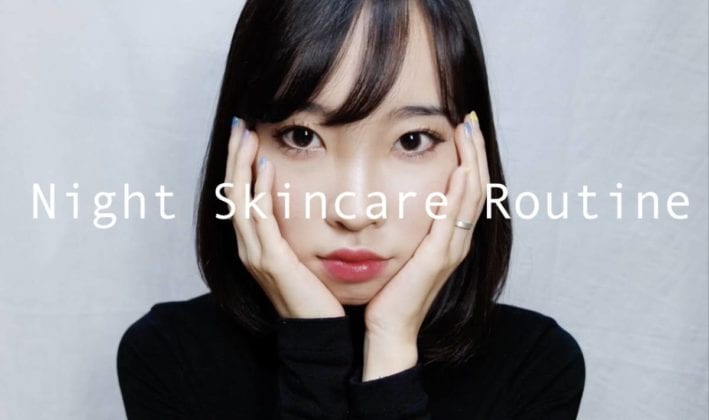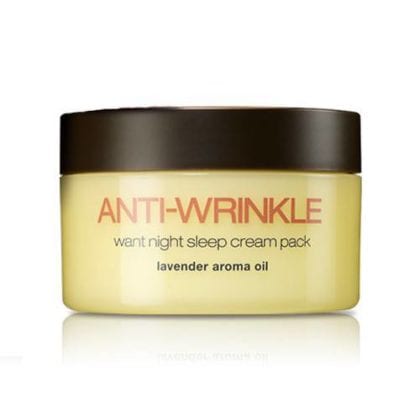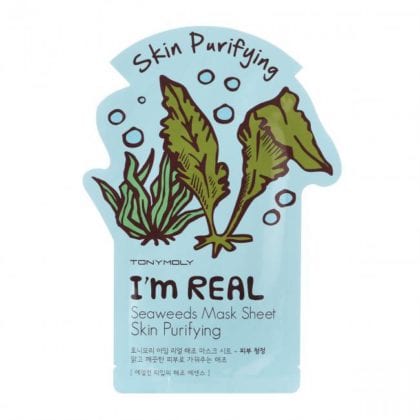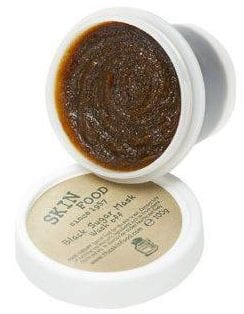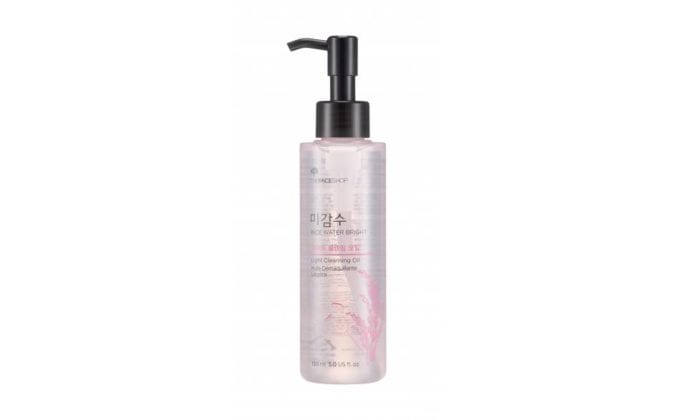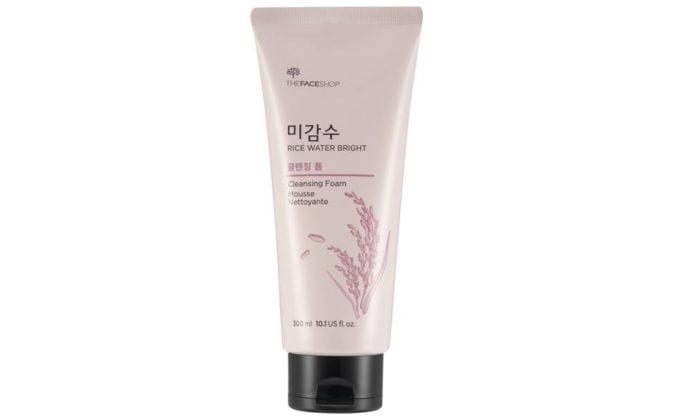
I know what you’re thinking. “Oh, she’s Korean, and she uses Korean skincare and eats kimchi everyday and listens to K-Pop.”
So the first thing we need to do is put aside my ethnicity, because I was adopted and am culturally just as American as someone born here — plus, I hate kimchi and prefer vaguely-folkish alterna-rock (fist bump if you get that reference).
At first, I was mystified that there was even a specific regimen perfected by Koreans in the first place. My assumption had been that we were all doing essentially the same thing (i.e. telling people we wash our face every night before bed but truthfully skipping it about three times a week). Once I became more familiar with it, I couldn’t really believe that women were actually spending the time it took to go through ten full steps to ensure their skin was flawless.
But that got me thinking.
 What if it were worth it? And what if it didn’t take as long as I thought it might? So with my husband’s credit card and a newfound interest in buying more skincare products at one time than I ever had in my entire life, I purchased the necessary ingredients for all the steps for which I didn’t already have products and waited for some of them to arrive from Korea. (Yes, some actually came from the country of Korea, which was a real lesson in patience.)
What if it were worth it? And what if it didn’t take as long as I thought it might? So with my husband’s credit card and a newfound interest in buying more skincare products at one time than I ever had in my entire life, I purchased the necessary ingredients for all the steps for which I didn’t already have products and waited for some of them to arrive from Korea. (Yes, some actually came from the country of Korea, which was a real lesson in patience.)
Let’s stop talking about this real quick and interject this: I am, in no way, advertising the brands I use. The photos are for reference only. You can purchase any brand you want, American or Korean, because I don’t benefit in any way if you buy what you see below (and some of these aren’t what I use). This isn’t a sales pitch, and it’s not Glamour magazine, but let’s all admit that photos make articles 110 percent better.

In researching more about the ten steps of Korean women’s daily skincare regimen, I learned some valuable bits of information. First, the products are actually quite specific and very different from their American counterparts. They are less harsh and more hydrating and often have a base of sake, which is distilled and whose fermentation kills bacteria in a gentler way than the alcohol-based American toners that strip your skin of every good and needful thing. I live in Utah, the nation’s driest state, and I like words like “gentle” and “hydrating.” Once all the items arrived on my doorstep, I began my regimen. I’ve been following it since late October and don’t anticipate ever going back to the old way of caring for my skin. I use about seven steps every morning and do all ten steps at night. A few of the products I personally use are American brands. But for the benefit of this article, I have included strictly Korean products.
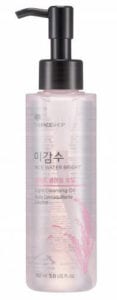
Oil pre-cleanse
This is not a step that ever crossed my mind and is fairly specific to the Korean regimen. The oil cleansers are very lightweight and melt any makeup or dirt on your skin, prepping it for your foaming facial cleanser. This two-part cleansing method was the first part of the entire Korean regimen to hit America because people started to realize the oil pre-cleanse had several skincare benefits: hydration, better makeup removal, and slowing down oil production.
Foaming face wash
This is no different from washing your face as you might at the end of the day regularly, but the foaming face washes created by Korean skincare companies are extremely gentle with no exfoliation or harsh ingredients. There are no acne fighting properties, but over time I’ve found that to be worthless because my skin hasn’t looked better since I began using the face wash I use.
Exfoliating mask
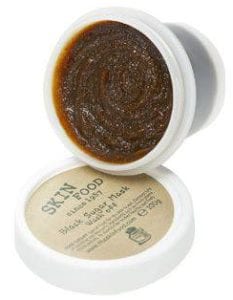
Americans seem to love exfoliating the crap out of their skin, which leads to worse breakouts, massive dehydration, and irritation. Recently, President Obama banned the usage of microbeads in products, which made me stand up and cheer, because microbeads (along with being horrible for the environment) ruin your skin. Korean exfoliators (often sugar scrubs) are, of course, gentler, and you only use them once or twice a week.
Sheet masks
These have also become an incredibly popular American trend. You see celebrities posting images of themselves rocking the sheet mask on long flights, and you hear about ingredients like snail slime (this is a real thing, and I haven’t worked up the gumption to use anything that includes snails, but maybe someday). Sheet masks are actual face-shaped sheets with holes for the eyes, nose, and mouth, and for lack of better description, they’re soaked in skincare. You leave them on your skin anywhere from 20 to 30 minutes and then pat the excess product into your skin afterward. It sounds like a gimmick, but from my personal experience, it works beautifully. If you find a sheet mask that’s more than about $5, then don’t bother — they’re certainly not worth the $25 price tag many carry.
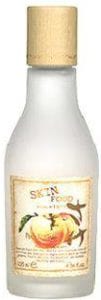
Toner
In America, there are two camps when it comes to toner: those who swear it’s an absolute necessity and those who swear it’s the worst or most worthless product to put on your face. There doesn’t appear to be any neutral ground. It’s harsh, it’s drying, and it doesn’t seem to actually do anything worthwhile, so I understand why people are so opposed to it. Korean toner, with sake as a basis, is very gentle and hydrating, and it leaves your skin soft rather than dry.
Essence
This is another product that is specifically Korean, and there’s something fancy about saying, “I’m wearing essence on my face.” It’s neither toner nor serum but is an all-around skin-perfecting product (with the same consistency of a toner) that tightens pores, clears up redness, assists with fine lines, and never burns grilled cheese.
If you need to grab a snack or something, I’ll give you a minute. We’re only halfway done, after all.
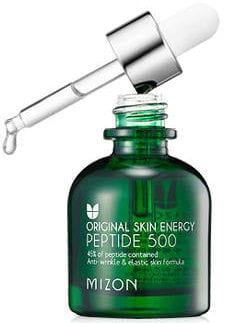
Serum
If you’re not interested in following through on the Korean 10-step regimen, at the very least you should use some sort of serum. There are serums for basically every skin woe, so find one that will tackle your greatest frustration (or buy several and use them on different areas of the face). They are highly concentrated and silky smooth, and your skin will thank you. I personally use one made by an independent American skincare company, but the Korean counterparts are quite wonderful, I’m sure. Trust me, I’m Korean.
Emulsion
If we’re going to be really honest, this is the step that confuses me the most and doesn’t appear to do what it claims it will (on my skin, anyhow). But if there’s anyone who suffers from FOMO, it’s certainly me. And what if it is working amazingly, and quitting it will suddenly make my face fall off? So I keep using it. Supposedly it tightens pores and slows down oil production.
Eye cream
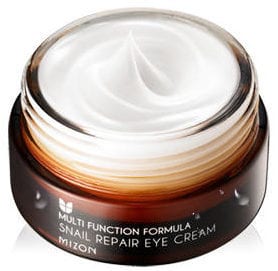
I think we need to be honest and admit that Korean women don’t tend to have fine lines and wrinkles in general because Asian don’t raisin, but there’s a very real chance that their skincare regimen also helps. Eye cream is another product that’s quite important, even if you don’t want to join the K-skin revolution. Find a product that works well for you and doesn’t make you break out on your eyelids (they’re called milia, and they’re life ruining). Apply a very small, conservative amount using the ring finger, patting (never rubbing) along the orbital bone. Don’t apply it to your eyelid, because there are too many health risks.
This one has snail slime in it, which is both cool and horrific.
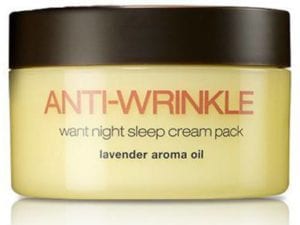
Moisturizer/night cream
For the steps you’re completing in the morning, you’ll want a good moisturizer with SPF in it. When you complete all ten before bed, a night cream is in order. Daily moisturizers are much lighter and wear well under makeup (or on their own), and night cream is a thick, rich product that you really won’t want to layer under anything.
I want to write something like, “And that’s it!” but you’d probably punch me in the throat, because writing this article took two weeks, reading it probably took you several days, and I start the entire 10-step regimen in the morning and finish it at bedtime, which is why I have no social life. I can’t. I’m doing my skincare.
But in all seriousness, this regimen doesn’t particularly take much longer than the one I had before (I’ve always taken my skin pretty seriously), because the application of products goes pretty fast. The most time consuming parts are the masks (I do three or four a week – doing a mask every day will unleash face demons so great you’ll wonder what else is being housed deep in your soul), but you can generally accomplish other tasks while waiting for them to do their skin-treating thing.
There’s a real science to the entire regimen, but I also find a sort of art to it as well. It’s luxurious, it’s a little selfish, and it allows you to see yourself as a worthwhile, sacred thing who deserves to be treated well. In following the 10-step skincare regimen the past several months, I’ve grown to hold my entire self in much higher regard than I used to (look, I still eat McDonald’s if that’s what you’re wondering, but not nearly as often). I recommend it to my friends and clients, not only because I’ve seen physical results but because I feel like it is, in some ways, a full-body-and-soul process.

